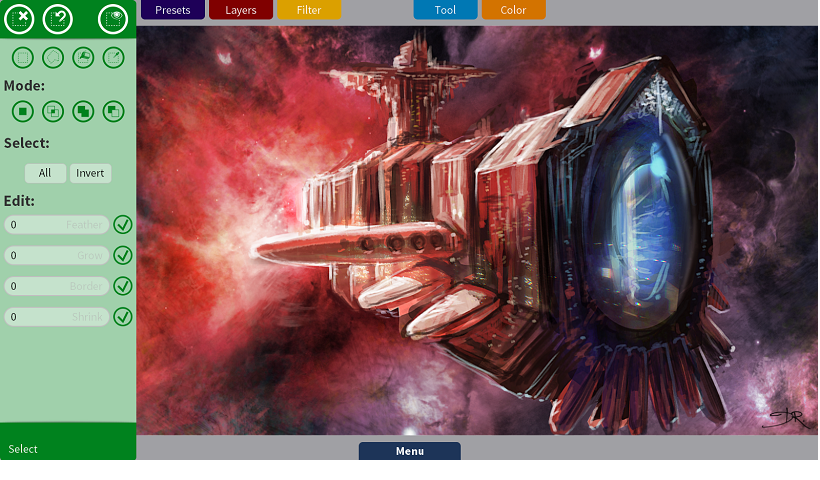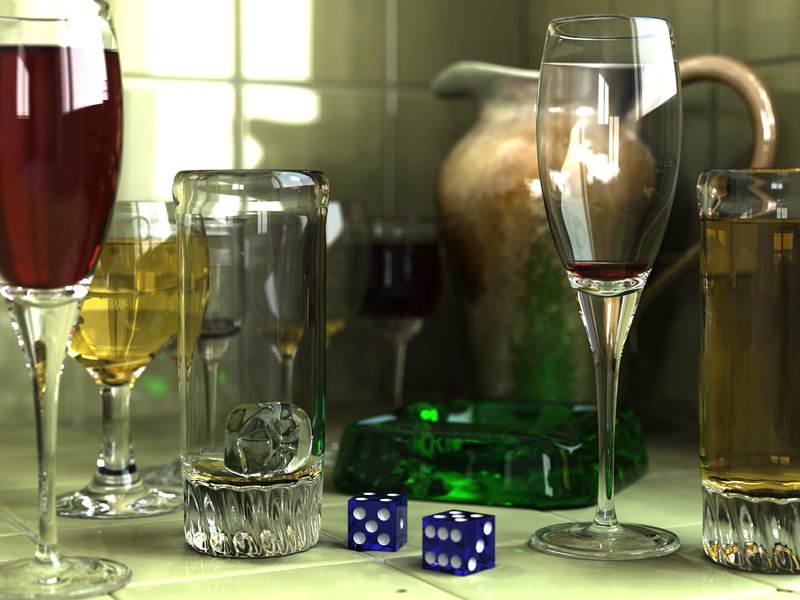There is far more to multi-media production on Linux than GIMP (GNU Image Manipulation Program), the beloved drawing and painting program, though it seems that is all there is because it gets all the attention. GIMP is wonderful, but there is an entire universe of profession-level multi-media creation applications in all creative arenas: drawing and illustration, photography, desktop publishing, music, and movies and videos. Today we’ll look at my recommend Linux distributions for multi-media production, graphics creation applications. Then in future installments in this series we’ll dive into audio production, video production, CAD, 3D printing, and other industrial programs.
Dream Studio
I’ve covered Dream Studio before, and since that first review creator Dick MacInnis has continued to polish and improve it. Dream Studio is based on Ubuntu, supports both 32- and 64-bit systems, and contains a vast assortment of creative applications, both visual and audio. It’s an excellent ready-to-use distro already tuned for good audio/video performance, and a big selection of apps to try.
Debian and Arch Linux
My other favorite distros for multi-media production are Debian and Arch. They’re not all polished and prefab like Dream Studio, but are for experienced Linux users who prefer to tune and manage their own systems. Both give you great flexibility and excellent package management. Debian has the largest software repositories of any distribution. Arch is lightweight, and both have superior documentation.
 butterfly on hand, shot on Canon 30D, edited in Digikam
butterfly on hand, shot on Canon 30D, edited in Digikam
Arch is on a rolling release cycle, which means it is continually updated. So you never have to upgrade to a new release. Debian is on a release cycle, so you have to upgrade to new releases periodically. The Debian upgrade and package management system is famously sophisticated and reliable, and a well-maintained Debian system can be upgraded for years without ever having to be re-installed. Debian comes in four flavors: Stable, Testing, Unstable, and Experimental. Stable is rock-solid and gets fast security patches, but it is on a slower release cycle. Testing and Unstable are plenty stable for desktop users and get newer packages, but spotty security patches. Experimental is for the adventurous.
Now let’s look at some of the best graphics applications Linux has to offer.
Drawing, Painting, Illustration
I called Krita a hidden Linux treasure, and since then it’s gotten even better. Krita is a professional digital painting program for creating comics, beautiful illustrations, story boards, and lush detailed matte paintings. It is a KDE program, but it’s an independent project and it depends on just a few KDE libraries. (It doesn’t require Akonadi or Nepomuk.) Krita is absolutely brilliant both in its interface and capabilities; any drawing and illustration program has hundreds of options and tools, and the Krita developers have done a magnificent job of streamlining its interface without sacrificing features.
Another reason I love Krita is they have created a separate version optimized for touch-screens, Krita Sketch. You get the full power of Krita on any touch device.
 Krita Sketch
Krita Sketch
Some other excellent choices are Inkscape, Xara Xtreme, and LibreOffice Draw. Cinepaint is a nice GIMP fork with advanced features like 16-bit and 32-bit color channel support, high-dynamic resolution (HDR), flipbooks, and color management.
3D Rendering and Modeling
Linux has a wealth of cutting-edge advanced 3D modeling and rendering applications. Blender is probably the best-known. It started out as a commercial closed-source application, and then was released under the GPL. Blender supports both animation and still image creation.
Persistence of Vision Raytracer creates absolutely stunning 3D still images. It supports different light sources and lot of textures and effects such as smoke and fog, ripples, reflections, refractions, and a whole lot more.
Radiance is an advanced suite of tools for lighting simulations. It’s a superior tool for architectural lighting simulations, and pretty nifty for whatever lighting scenarios you can dream up. Glasses, created in POV-Ray
Glasses, created in POV-Ray
Desktop Publishing and Layout
Both LibreOffice Writer and Calligra Words are good graphical desktop publishing and layout applications. Both are frames-oriented, rather than page-oriented (like Microsoft Word), so you have precise control over page elements and placement. Both also use styles, so you can quickly format documents, and just as quickly do global changes.
My personal favorite is Scribus. Scribus can create editable and inter-active PDFs, and supports advanced PDF features like transparency, bookmarks, and annotations. It supports a wide range of graphical formats and scripting. Writer and Words are fine for simpler jobs like brochures and newsletters, but if you need to put together professional-level pre-press (for example, preparing a book manuscript or magazine for print) then you want Scribus.
Photography
There are so many excellent photographic apps and tools they could fill a book. Let’s hit the highlights.
Digikam is the primo digital photo management and editing program. It supports color management, a feast of RAW editing features, archiving and collection management, face recognition, and a lot of advanced editing features. You can import and export multiple file formats, and directly to sites like Flickr, SmugMug, and Facebook.
Darktable is a brilliant RAW editor, and as much as I love Digikam I find I’m using Darktable more for my RAW manipulation. It offers side-by-side comparison views, tethered shooting, and a whole lot of fine-tuning and tweaks.
Hugin gets my vote for panorama creator, with splendid tools for blending images seamlessly and correcting problems. It has a batch processor and my favorite tool, a lens calibrator so you don’t have make the same adjustments for every image.
Fear not if your photo archives are on paper, because you can make high-quality scans with XSane. The so-called simple scanners that have come out recently just don’t work for me; they’re not simple and they don’t do much that is useful. XSane is an old workhorse that has been around forever, is completely reliable, and has actual useful features.
Come back Friday to read about my picks for best high-quality video editing and creation programs.
Image Credits
Butterfly on hand, Carla Schroder
Glasses, public domain, named one of the finest images on Wikipedia, Courtesy Wikimedia Commons


